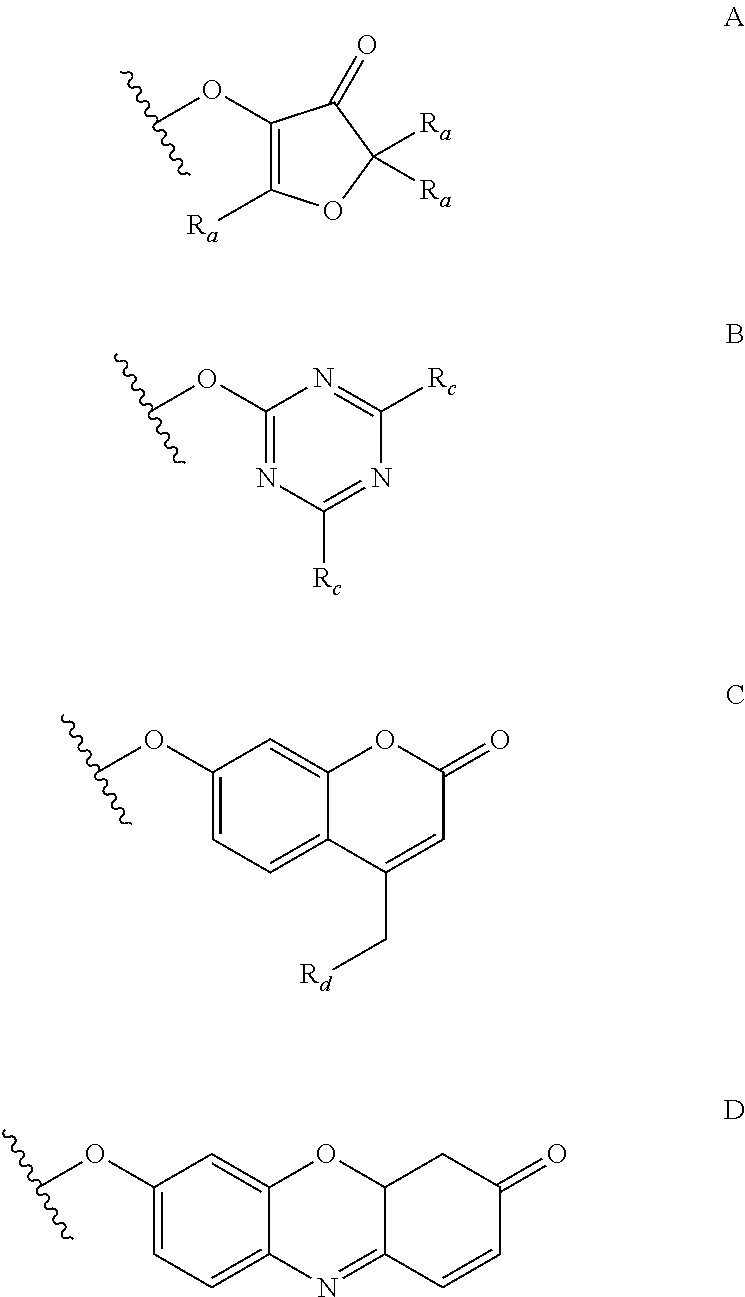Synthesis of new fucose-containing carbohydrate derivatives
a technology of fucose and carbohydrate, which is applied in the field of enzymatic synthesis of fucose-containing carbohydrate derivatives, can solve the problems of complicated stereoselective chemical synthetic process, limited availability of naturally occurring hmos, and inability to isolate fucose-containing carbohydrate from human and other mammalian milk
- Summary
- Abstract
- Description
- Claims
- Application Information
AI Technical Summary
Benefits of technology
Problems solved by technology
Method used
Image
Examples
example 1
Manufacture of Fucosyl Acceptors
[0153]A) General procedure: lactose (5 g, 14.6 mmol) and TsOH.H2O (0.2 g, 1.05 mmol) were added in one portion to a mixture of DMF (20 ml) and benzaldehyde dimethyl acetal (5.5 ml, 35.4 mmol, 2.4 eq.) at room temperature. The reaction mixture was vigorously stirred at 70° C. under exclusion of humidity for 1 hour. After cooling triethyl amine (0.15 ml) was added then the volatile components (MeOH, triethyl amine, remaining benzaldehyde dimethyl acetal) were removed in vacuo. To the reaction mixture the benzyl bromide derivative (1.5 eq.)—predissolved in 5-10 ml of DMF, if the reagent is a solid—was added and the mixture was cooled to 0° C. for 20 min. Still under cooling NaH (0.8 g of a 55% dispersion in mineral oil, 1.3 eq.) was added in one portion, and the mixture was stirred under cooling until the hydrogen formation stopped then at room temperature for 2-3 hours. Methanol (2 ml) was added carefully and the reaction was stirred for a further 5 min...
example 2
Manufacture of a Fucosyl Donor of Formula 2A
[0182]a) The solution of 2,3,4-tri-O-(4-methoxybenzyl)-L-fucopyranose trichloroacetimidate (a / (3 mixture, prepared from 85 mmol of 2,3,4-tri-O-(4-methoxybenzyl)-L-fucopyranose and trichloroacetonitrile in the presence of NaH in quantitative yield) in diethyl ether (100 ml) was added to a mixture of 2,5-dimethyl-4-hydroxy-3-oxo-(2H)-furan (85 mmol) and TMS-triflate (1.2 ml) in diethyl ether (200 ml) at −14° C. After 3 hours the cooling bath was removed and the stirring continued for 1 hour. The reaction mixture was diluted with ethyl acetate and extracted with sat. NaHCO3-solution (3×150 ml) and brine (150 ml). The organic phase was dried over Na2SO4 and evaporated. The resulting syrup was purified by column chromatography yielding 23.27 g of 2,5-dimethyl-3-oxo-(2H)-furan-4-yl 2,3,4-tri-O-(4-methoxybenzyl)-α-L-fucopyranoside as a thick yellow syrup in a 1:1 mixture of diastereoisomers. Selected NMR chemical shifts in CDCl3:anomeric protons:...
example 3
Transfucosylation Reactions
[0184]General procedure: A solution of the appropriate fucosyl donor (such as p-nitrophenyl α-L-fucopyranoside, α-L-fucosyl fluoride, 2,5-dimethyl-3-oxo-(2H)-furan-4-yl α-L-fucopyranoside or 2′-O-fucosyllactose) and acceptor (10-500 mmol, donor acceptor ratio is 5:1 to 1:5) was incubated in degassed incubation buffer at a pH range from 5.0 to 9.0) with recombinant α-fucosidase, α-transfucosidase or α-fucosynthase. The reaction mixture was stirred for 24 hours at a temperature range from 20 to 70° C.
[0185]Samples were taken at different times of the reaction, the reaction was stopped by the addition of 1M NaHCO3-solution at pH=10 and analyzed by TLC and / or HPLC. After completion, the enzyme was denatured and centrifuged. The resulting solution was evaporated under reduced pressure. After lyophilisation, the dry residue was dissolved in water and purified by biogel chromatography (P-2 Biogel, 16×900 mm) with water or by reverse phase chromatography. The yiel...
PUM
| Property | Measurement | Unit |
|---|---|---|
| concentrations | aaaaa | aaaaa |
| concentrations | aaaaa | aaaaa |
| temperature | aaaaa | aaaaa |
Abstract
Description
Claims
Application Information
 Login to View More
Login to View More - R&D
- Intellectual Property
- Life Sciences
- Materials
- Tech Scout
- Unparalleled Data Quality
- Higher Quality Content
- 60% Fewer Hallucinations
Browse by: Latest US Patents, China's latest patents, Technical Efficacy Thesaurus, Application Domain, Technology Topic, Popular Technical Reports.
© 2025 PatSnap. All rights reserved.Legal|Privacy policy|Modern Slavery Act Transparency Statement|Sitemap|About US| Contact US: help@patsnap.com



